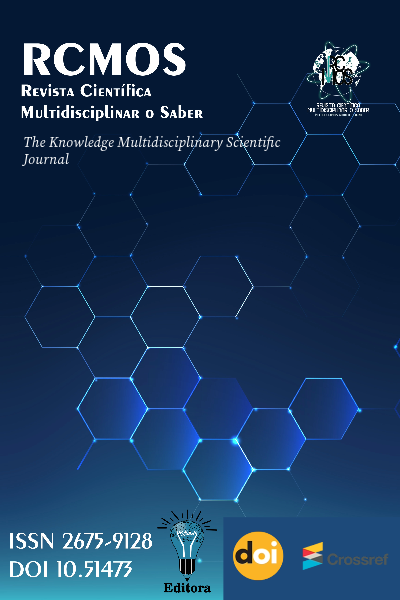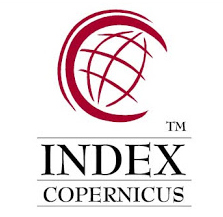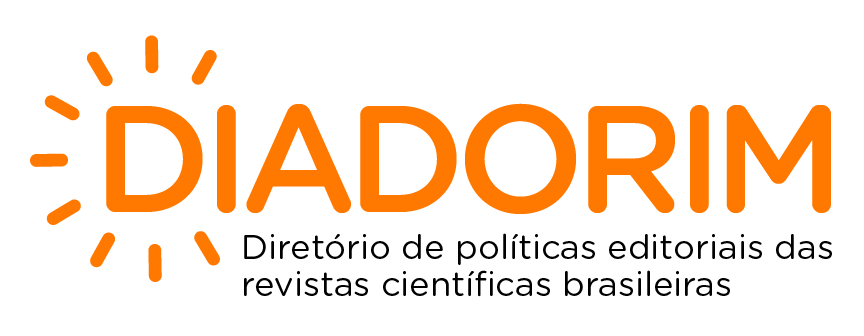Integração entre Doutrina Militar e Segurança Privada: Um Estudo sobre Modelos de Gestão de Risco em Ambientes Corporativos
Integration between Military Doctrine and Private Security: A Study on Risk Management Models in Corporate Environments
DOI:
https://doi.org/10.51473/rcmos.v1i10.2021.1637Palavras-chave:
Segurança Privada; Doutrina Militar; Gestão de Risco; Protocolos Corporativos; Resiliência Organizacional.Resumo
A segurança corporativa enfrenta, no mundo contemporâneo, desafios cada vez mais complexos, exigindo modelos de gestão de risco sofisticados e adaptáveis. Nesse contexto, a integração entre a doutrina militar e a segurança privada surge como uma proposta estratégica, uma vez que experiências adquiridas em operações militares de fronteira, selva, crises migratórias e rebeliões prisionais oferecem fundamentos sólidos para o desenvolvimento de protocolos avançados de proteção. Este artigo científico busca analisar como princípios de planejamento estratégico, inteligência operacional e disciplina militar podem ser adaptados ao ambiente corporativo, ampliando a resiliência organizacional diante de ameaças internas e externas. O estudo aborda, ainda, as limitações jurídicas e éticas dessa transposição e propõe caminhos para uma gestão de risco integrada, fundamentada em exemplos reais e nas práticas consolidadas do setor de defesa.
Downloads
Referências
ADORNO, Sérgio; SALLA, Fernando. Criminalidade organizada nas prisões e os ataques do PCC. Estudos Avançados, v. 21, n. 61, p. 7–29, 2007. DOI: https://doi.org/10.1590/S0103-40142007000300002
ANDREAS, Peter; SNYDER, Timothy. The Wall Around the West: State Borders and Immigration Controls in North America and Europe. Lanham: Rowman & Littlefield, 2000.
BAYLIS, John; WIRTZ, James. Strategy in the Contemporary World. 5. ed. Oxford: Oxford University Press, 2015. DOI: https://doi.org/10.1093/hepl/9780198708919.003.0001
BAYLIS, John; SMITH, Steve; OWENS, Patricia. The Globalization of World Politics: An Introduction to International Relations. 5. ed. Oxford: Oxford University Press, 2011.
BETTS, Alexander; COLLIER, Paul. Refuge: Transforming a Broken Refugee System. Londres: Penguin, 2017.
BOIN, Arjen et al. The Politics of Crisis Management: Public Leadership under Pressure. Cambridge: Cambridge University Press, 2005. DOI: https://doi.org/10.1017/CBO9780511490880
BONANNO, George. Loss, Trauma, and Human Resilience. American Psychologist, v. 59, n. 1, p. 20–28, 2004. DOI: https://doi.org/10.1037/0003-066X.59.1.20
BRYNJOLFSSON, Erik; MCAFEE, Andrew. The Second Machine Age: Work, Progress, and Prosperity in a Time of Brilliant Technologies. New York: W.W. Norton, 2014.
CASTELLS, Manuel. A sociedade em rede. 8. ed. São Paulo: Paz e Terra, 2010.
CLAUSEWITZ, Carl von. Da guerra. São Paulo: Martins Fontes, 1989.
CLARKE, Richard. Cyber War: The Next Threat to National Security and What to Do About It. New York: Ecco, 2017.
COOMBS, W. Timothy. Ongoing Crisis Communication: Planning, Managing, and Responding. 3. ed. Los Angeles: SAGE, 2007.
COOMBS, W. Timothy. Crisis Communication and Reputation Management. London: Routledge, 2010.
COOMBS, W. Timothy; HOLLADAY, Sherry J. The Handbook of Crisis Communication. Chichester: Wiley-Blackwell, 2010. DOI: https://doi.org/10.1002/9781444314885
COMFORT, Louise; KAPUCU, Naim. Inter-organizational Coordination in Extreme Events: The World Trade Center Attacks, September 11, 2001. Natural Hazards, v. 39, p. 309–327, 2006. DOI: https://doi.org/10.1007/s11069-006-0030-x
CREVELD, Martin van. The Transformation of War. New York: The Free Press, 1991.
FISHER, Roger; URY, William. Getting to Yes: Negotiating Agreement Without Giving In. 2. ed. Boston: Houghton Mifflin, 1991.
GARTZKE, Erik. The Capitalist Peace. American Journal of Political Science, v. 51, n. 1, p. 166–191, 2007. DOI: https://doi.org/10.1111/j.1540-5907.2007.00244.x
GODET, Michel. Creating Futures: Scenario Planning as a Strategic Management Tool. Paris: Economica, 2000.
HEASLIP, Graham. Challenges of Logistics in Humanitarian Aid. Proceedings of the 9th International Conference on Humanitarian Logistics, Dublin: Trinity College, 2011.
HILES, Andrew. Business Continuity Management: Global Best Practices. New Jersey: Wiley, 2010.
HUNTINGTON, Samuel. The Soldier and the State: The Theory and Politics of Civil-Military Relations. Cambridge: Harvard University Press, 1996.
JANOWITZ, Morris. The Professional Soldier: A Social and Political Portrait. New York: The Free Press, 1971.
KAPLAN, Robert S.; MIKES, Anette. Managing Risks: A New Framework. Harvard Business Review, v. 90, n. 6, p. 48–60, 2012.
KAPUCU, Naim. Interagency Communication Networks During Emergencies: Boundary Spanners in Multiagency Coordination. The American Review of Public Administration, v. 36, n. 2, p. 207–225, 2006. DOI: https://doi.org/10.1177/0275074005280605
LOWENTHAL, Mark M. Intelligence: From Secrets to Policy. 7. ed. Washington: CQ Press, 2017.
MINTZBERG, Henry. Managing. San Francisco: Berrett-Koehler Publishers, 2009.
NYE, Joseph. Soft Power: The Means to Success in World Politics. New York: Public Affairs, 2004.
PORTER, Michael. Competição: Estratégias competitivas essenciais. Rio de Janeiro: Elsevier, 1999.
REICHER, Stephen et al. Self and Social Identity in Collective Action. In: REES, D.; STOTT, C. (org.). Crowd Dynamics, Security and Public Order. Londres: Routledge, 2004.
SALAS, Eduardo et al. Teamwork in Multiteam Systems. Journal of Applied Psychology, v. 91, n. 2, p. 269–280, 2006. DOI: https://doi.org/10.1037/0021-9010.91.2.311
SHEFFI, Yossi. The Resilient Enterprise: Overcoming Vulnerability for Competitive Advantage. Cambridge: MIT Press, 2007.
SUN TZU. A arte da guerra. São Paulo: Martins Fontes, 2002.
YUKL, Gary. Leadership in Organizations. 8. ed. Boston: Pearson, 2013.
ZEGART, Amy B. Spies, Lies, and Algorithms: The History and Future of American Intelligence. Princeton: Princeton University Press, 2019.
Downloads
Publicado
Edição
Seção
Categorias
Licença
Copyright (c) 2021 Rodrigo Hipólito Menezes de Araújo (Autor)

Este trabalho está licenciado sob uma licença Creative Commons Attribution 4.0 International License.
Este trabalho está licenciado sob a Licença Creative Commons Atribuição 4.0 Internacional (CC BY 4.0). Isso significa que você tem a liberdade de:
- Compartilhar — copiar e redistribuir o material em qualquer meio ou formato.
- Adaptar — remixar, transformar e construir sobre o material para qualquer propósito, inclusive comercial.
O uso deste material está condicionado à atribuição apropriada ao(s) autor(es) original(is), fornecendo um link para a licença, e indicando se foram feitas alterações. A licença não exige permissão do autor ou da editora, desde que seguidas estas condições.
A logomarca da licença Creative Commons é exibida de maneira permanente no rodapé da revista.
Os direitos autorais do manuscrito podem ser retidos pelos autores sem restrições e solicitados a qualquer momento, mesmo após a publicação na revista.













